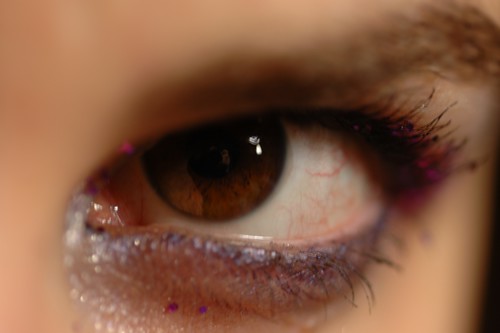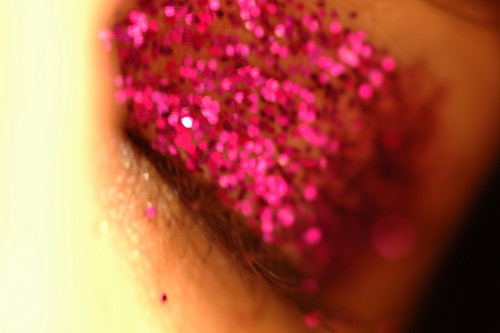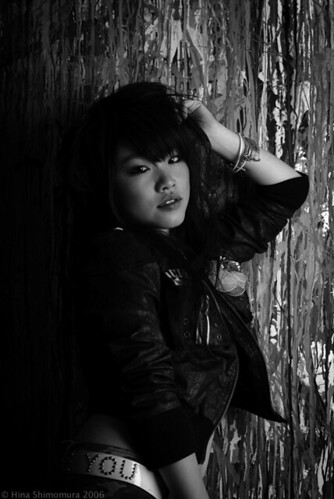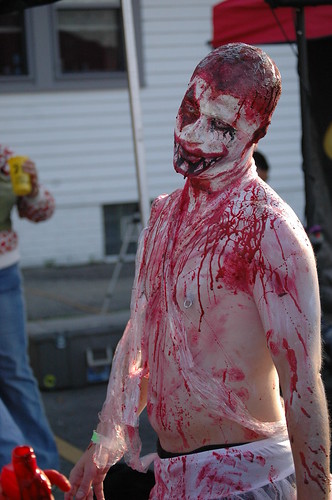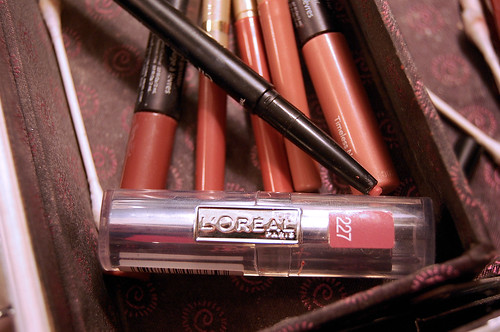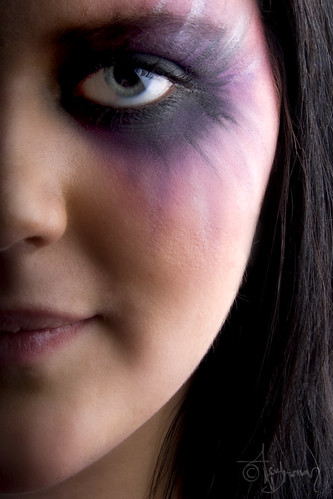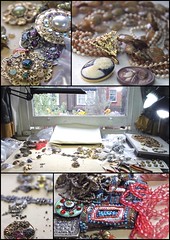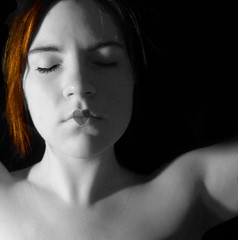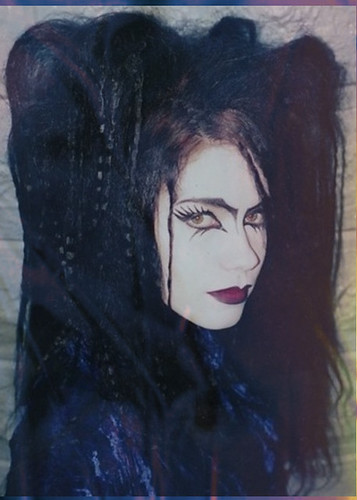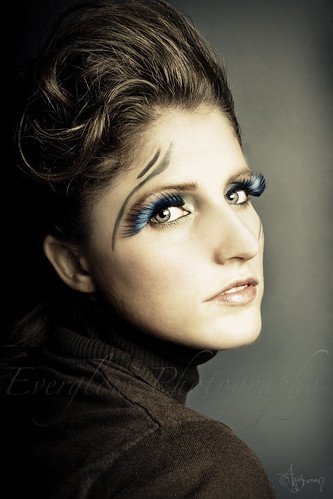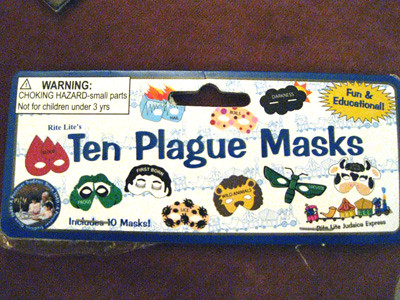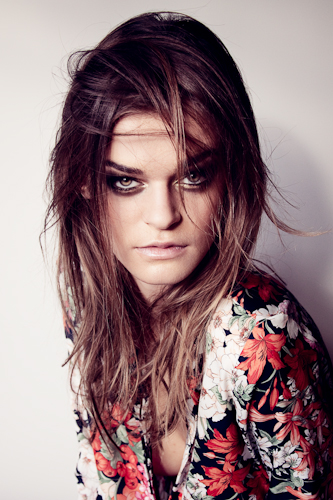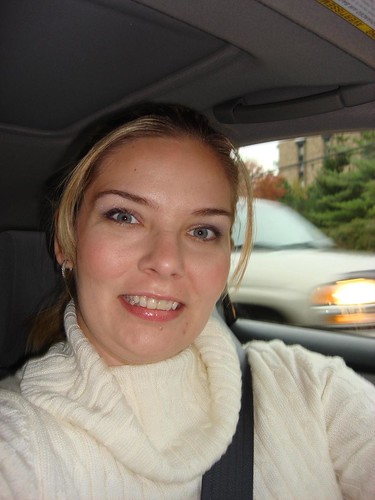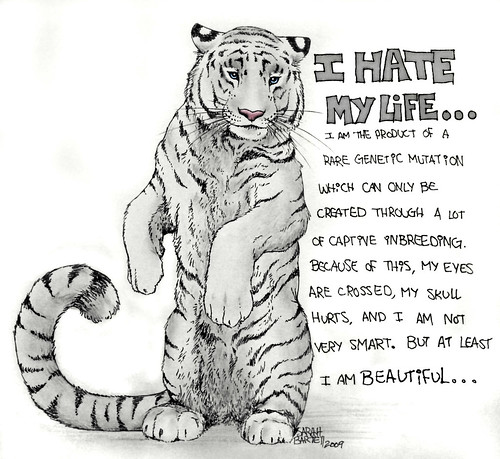Check out these eye make up application images:
Longan tree flowery …Cây Nhãn đầy hoa …

Image by Vietnam Plants & The USA. plants
Vietnamese named : Nhãn
Common names : Longan, Dragon eye, Leng Keng
Scientist name : Dimocarpus longan Lour.
Synonyms : Synonyms: Nephelium longan (Lam.) Carm.; Euphoria longana Steud.
Family : Sapindaceae. Họ Bồ Hòn
Kingdom:Plantae
(unranked):Angiosperms
(unranked):Eudicots
(unranked):Rosids
Order:Sapindales
Genus:Dimocarpus
Species:D. longan
Links :
**** vho.vn/view.htm?ID=2560&keyword=gan
Nhãn – Dimocarpus longan Lour. (Euphoria longan (Lour.) Stend.), thuộc họ Bồ hòn – Sapindaceae.
Mô tả: Cây cao 5-10m, tán lá tròn xoè ra và rậm rạp. Cành non có lông. Lá mọc so le, kép lông chim, gồm 3-5 đôi lá chét nhẵn, mặt dưới màu thẫm hơn. Hoa xếp thành chuỳ mọc ở ngọn cành và ở nách lá, màu vàng nhạt. Quả tròn, vỏ quả vàng trơn nhẵn. Hạt đen nhánh. Áo hạt màu trắng trong bao quanh hạt và không dính vào hạt, khi chín thì ngọt và ăn mát.
Bộ phận dùng: Áo hạt (hay gọi là cùi) – Arillus Longan, thường gọi là Long nhãn nhục. Hạt, lá cũng được dùng.
Nơi sống và thu hái: Gốc ở Ấn Độ, được trồng ở vùng đồng bằng. Nhãn dễ trồng, mọc nhanh, thích hợp với đất thịt pha cát, nơi có lớp đất canh tác sâu. Có thể trồng bằng hạt, bằng cành chiết hay ghép cây. Độ 4-5 năm thì có quả, thời gian cho quả cũng rất lâu. Vào tháng 6-8, khi Nhãn chín, thu về, phơi nắng hay sấy cho cùi vàng đều thì lột cùi, phơi tiếp đến khô thì dùng. Hạt dùng phơi khô. Rễ và lá thu hái quanh năm.
Thành phần hoá học: Cùi Nhãn còn tươi có các thành phần sau, tính theo %: nước 77,15, tro 0,01, chất béo 0,13, protid 1,47, hợp chất có nitrogen tan trong nước 20,55, đường saccharose 12,25, vitamin A và B. Cùi Nhãn khô chứa nước 0,85, chất tan trong nước 79,77, chất không tan trong nước 19,39, tro 3,36. Trong phần tan trong nước có glucose 26,91%, saccharose 0,22%, acid tartric 1,26%, chất có nitrogen 6,309%.
Hạt Nhãn chứa tinh bột, saponin, chất béo và tanin. Lá chứa quercetrin, quercetin, tanin.
Tính vị, tác dụng: Cùi Nhãn có vị ngọt, tính ấm; có tác dụng bổ tâm, an thần, kiện tỳ, làm tăng cơ nhục. Hạt có vị mặn, tính bình, có tác dụng thu liễm chỉ huyết. Lá có tác dụng hạ nhiệt, tiêu viêm. Rễ có tác dụng lợi tiểu và hoạt huyết.
Công dụng: Các bộ phận khác nhau của Nhãn được dùng như sau:
- Cùi Nhãn dùng chữa trí nhớ suy giảm hay quên, tư lự quá độ mất ngủ, thần kinh suy nhược, tâm thần mệt mỏi hồi hộp, hoảng hốt, gan kém, tỳ kém, huyết hư, rong kinh, ốm yếu sau khi bị bệnh. Dùng 9-15g.
- Rễ chữa dưỡng trấp niệu, bạch đới, thống phong. Dùng 15-30g.
- Lá dùng ngừa sởi, trị cảm lạnh, sốt rét, viêm ruột. Dùng 10-15g. Lá nấu nước tắm trị eczema bìu dái.
- Hạt dùng trị đau dạ dày, đau thoát vị, mụn nhọt và bỏng, vết thương chảy máu. Dùng 10-15g dạng thuốc sắc. Đồng thời tán bột, hoà với dầu Dừa dùng bôi vào chỗ đau.
- Vỏ cây và vỏ quả dùng chữa bỏng, chữa sâu răng. Đốt, tán bột hay nấu cao bôi.
Ghi chú: Còn có thứ Nhãn tà, Nhãn cám – Dimocarpus longan Lour. subsp. longan var. obtusa (Pierre) Leenh., có quả ăn được và dùng làm thuốc như Nhãn và cỏ cũng dùng chữa vết thương và cầm máu
**** www.khuyennongvn.gov.vn/e-khcn/ghep-bo-cay-nhan-xuong-com…
Ghép bo cây nhãn xuồng cơm vàng để ngăn chặn bệnh chổi rồng đang gây hại hàng ngàn ha nhãn tại ĐBSCL
**** cnx.org/content/m30716/latest/?collection=col10800/1.1
sự ra hoa và biện pháp xử lý ra hoa nhãn
**** www.thaythuoccuaban.com/vithuoc/longnhan nhuc.htm
**** thuocdongduoc.vn/index.php?option=com_content&view=ar…
____________________________________________________________
**** edis.ifas.ufl.edu/mg049
Longan Growing in the Florida Home Landscape1
Other common names: English – lungan, dragon eye; Spanish – mamoncillo chino, longana; Malaysian and Indonesian – leng keng; Thai – lam yai
Scientific name: Dimocarpus longan Lour.
Synonyms: Nephelium longan (Lam.) Carm.; Euphoria longana Steud.
Family: Sapindaceae
Relatives in the same family: Lychee, rambutan, pulasan, akee, Spanish lime, soapberry
Origin: Mayanmar (Burma), southern China, southwest India, Sri Lanka, Indochinese peninsula
Distribution: China, Taiwan, Thailand, Mayanmar, Cambodia, Vietnam, Laos, India, Australia, Kenya, some Central and South American countries, and South Africa. In the United States longan is grown in Hawaii, California and south Florida. The longan was introduced to the United States in 1903. Commercial acreage in southern Florida was planted in the 1990s and continues to the present.
Importance: Economically the longan is an important crop in southeast Asia and is of increasing importance in Florida.
Botanical Description
Longan tree. Fig. 2. ‘Kohala’ longan tree with fruit.
Credits: Ian Maguire UF/IFAS/TREC
Tree: The longan is a symmetrical, evergreen tree with dense dark green foliage. Depending upon climate and soil type the tree may grow over 100 ft (31 m) tall. However, in south Florida, trees typically grow to 30-40 ft (9.1-12.2 m) in height and width. The crown tends to be round or oblong and the bark is corky.
Longan leaves. Fig. 3. ‘Kohala’ longan leaves.
Credits: Ian Maguire UF/IFAS/TREC
Leaves: The pinnately compound alternate leaves are dark green, shiny, leathery, up to 12 inches (30 cm) long with wavy margins and blunt pointed tips. There are 6 to 9 pairs of leaflets per leaf.
Longan flowers. Fig. 4. ‘Kohala’ longan panicle in flower.
Credits: Ian Maguire UF/IFAS/TREC
Flowers: Inflorescences are terminal, 4 to 18 inches (10-45 cm) long, erect and widely branched. The inflorescence is commonly called a panicle. Flowers on the panicle are held on numerous cymules on the many branchlets of the panicle. The flowers are small and have 5 to 6 sepals and petals, and are brownish yellow or greenish yellow, with a two-lobed pistil and usually 8 stamens. Panicles may carry a few to more than 350 fruit. There are 3 flower types in longan, staminate (functionally male), pistillate (functionally female) and hermaphroditic (bisexual). Flowering in each panicle occurs in progressive openings of staminate (male) flowers first, then hermaphroditic flowers functioning as females and then hermaphroditic flowers functioning as males.
‘Kohola’ longan. Fig. 5. ‘Kohala’ longan fruit.
Credits: Ian Maguire UF/IFAS/TREC
Fruit: The drupaceous fruit are spherical to ovoid, ¾ to 1 7/16 inches (22-36 mm) in diameter and 0.21 to 0.67 oz (6-19 g) in weight. The peel is tan or light brown, thin, leathery and smoother than that of the lychee. The pulp is whitish and translucent; thin in large seeded fruits and medium thick to thick in others. Fruit have 1 seed; globular and shiny, brown to dark brown. The pulp does not adhere to the seed and is flavorful and sweet with 12-21% soluble solids. The time from flowering to harvest is 140 to 190 days.
Season of bearing: The main bloom season for longans in south Florida is from February/March through April and the beginning of May. However, some cultivars will produce off-season blooms after the crop is harvested in late August and September. The off-season crop matures in the fall.
Varieties
There are numerous cultivars of longan; however, world-wide only 30 to 40 are grown commercially. Reliable bearing is the major production problem for longan throughout the world. In Florida, 99% of the acreage is planted with ‘Kohala’. Other cultivars have been introduced, some for a long time and others recently (Table 1). A number of new and re-introductions including ‘Edau’ (‘Daw’), ‘Chompoo’, ‘Haew’, and ‘Biew Kiew’ are under evaluation by several institutions and producers. However, nothing superior to ‘Kohala’ has been identified.
One of the recently introduced cultivars is named ‘Diamond River’. This cultivar is from Thailand and is reported to fruit every year, be precocious, produce off-season, and produce a sizeable late season crop. However, fruit quality is only fair and the tree is very susceptible to limb breakage.
Climate
Longan is a subtropical tree well adapted to tropical climates with distinctive wet/dry periods and subtropical areas with a cool, nonfreezing fall/winter period. Longans are indigenous to lowland and middle elevations in southeast Asia and grow at elevations from sea level to 1500 feet (1.8-460 m).
Longans produce more reliably in areas characterized by low non-freezing temperatures (59°F; 15°C or less) and a dry period during the fall and winter (October-February). Warm temperatures (70-85°F; 21-29°C) during spring, followed by high summer temperatures (80-95°F; 27-35°C) and nonlimiting soil moisture are best for fruit development.
Warm and rainy winters are conducive to vegetative growth and reduce flowering and fruit production. Excessive rains during flowering cause flower drop and may reduce pollination and fruit set. Young longan leaves are sensitive to strong winds during vegetative flushing which may result in leaf dehydration, browning and deformation.
Environmental Stress Physiology
Drought
Longan is tolerant of dry soil conditions. Withholding or reducing watering during the late summer/early fall through winter is recommended to stop or reduce excessive vegetative growth and enhance subsequent flowering during the spring. However, for optimum fruit production and quality, regular irrigation is recommended from flowering through harvest.
Flood
Longan is not tolerant of excessively wet or flooded soil conditions When ambient temperatures are high, young trees may decline and die with as little as 5 to 10 days of flooding or constantly wet soil conditions.
Cold
Longan is slightly less cold tolerant than lychee. Young trees are very susceptible to freezing temperatures with severe damage at 29° to 31°F (-1 to –0.5°C) and may be killed at 26° to 28°F (-2 to –3°C). Older trees are more cold tolerant but branches are injured at 25° to 26°F (-3 to -4°C) with very severe damage or death below 24°F (-4°C).
Wind
Longan trees are tolerant of windy conditions and young trees can generally be established on windy sites. Mature trees pruned to limit their hieght to 10 to 20 ft (3.1-6.1 m) are more likely to survive hurricane force winds. The most common damage from hurricane winds is toppling over of the trees and loss of most limbs. Windy, dry, cool weather during flowering desiccates flowers and reduces fruit set.
Salt
Longan is not tolerant of saline soil and water conditions. Symptoms of salt stress include marginal and tip necrosis of leaves, leaf browning and drop, stem dieback, and tree death.
Propagation
Longan may be grown from seed, however, cultivars do not come true from seed, may be slow to bear, and the fruit of inferior quality. Seedlings may be used for selection of new cultivars or rootstocks. Air layering (marcottage) is the most common propagation method used in Florida. April through August is the best time for air layering and roots form within 10 to 12 weeks. Grafting onto seedling rootstock may be done by side veneer or cleft grafting. Seedlings are usually grafted when pencil size (3/8th inch; 8 mm) or larger stem diameter. Trees may be top-worked by grafting onto selected vigorous shoots. Trees may also be propagated by cuttings with mist and bottom heat.
Production (Crop Yields)
Seedling trees may take up to 6 years to bear fruit, whereas air layered trees may bear fruit 2 to 3 years after planting. In general, longan trees bear erratically (i.e., not every year) and in some years little to no fruit is produced. Yields from individual mature trees may range from 50 to over 500 lbs (23-227 kg).
Spacing
Longans grow fairly fast and at maturity, are large trees. Homeowners should plant longan trees 22 to 25 ft (6.7-7.6 m) or more away from other trees and structures. Trees planted too close to other trees or structures may not grow normally or produce much fruit due to shading.
Soils
Longan trees thrive on various soil types provided they are well drained. They do well on sandy loams, sand and calcareous, rocky soils of south Florida.
Planting a Longan Tree
Properly planting a longan tree is one of the most important steps in successfully establishing and growing a strong, productive tree. The first step is to choose a healthy nursery tree. Commonly, nursery longan trees are grown in 3 gallon containers and trees stand 2 to 4 ft (0.6-0.9 m) from the soil media. Large trees in smaller containers should be avoided as the root system may be "root bound". This means all the available space in the container has been filled with roots to the point that the root system becomes compacted within the container. Root bound root systems may not grow properly once planted in the ground.
Inspect the tree for insect pests and diseases and inspect the trunk of the tree for wounds and constrictions. Select a healthy tree and water it regularly in preparation for planting in the ground.
Planting may be done at any time in south Florida if there is access to water. Otherwise, the best time to plant is in late spring or early summer during the rainy season.
Site Selection
In general, longan trees should be planted in full sun for best growth and fruit production. Select a part of the landscape away from other trees, buildings and structures, and powerlines. Remember longan trees can become very large if not pruned to contain their size. Select the warmest area of the landscape that does not flood (or remain wet) after typical summer rainfall events.
Planting in Sandy Soil
Many areas in Florida have sandy soil. Remove a 3 to 10 ft (0.9-3.1 m) diameter ring of grass sod. Dig a hole 3 to 4 times the diameter and 3 times a deep as the container the longan tree has come in. Making a large hole loosens the soil adjacent to the new tree making it easy for the roots to expand into the adjacent soil. It is not necessary to apply fertilizer, topsoil, or compost to the hole. In fact, placing topsoil or compost in the hole first and then planting on top of it is not desirable. If you wish to add topsoil or compost to the native soil, mix it with the soil excavated from making the hole in no more than a 50-50 ratio.
Backfill the hole with some of the native soil removed to make the hole. Remove the tree from the container and place it in the hole so that the top of the soil media in the container is level with or slightly above the surrounding soil level. Fill soil in around the tree roots and tamp slightly to remove air pockets. Immediately water the soil around the tree and tree roots. Staking the tree with a wooden or bamboo stake is optional. However, do not use wire or nylon rope to tie the tree to the stake as they may eventually damage the tree trunk as it grows. Use a cotton or natural fiber string that will degrade slowly.
Planting in Rockland Soil
Many areas in Miami-Dade County have a very shallow soil and several inches below the soil surface is a hard calcareous bedrock. Remove a 3 to 10 ft (0.9-3.1 m) diameter ring of grass sod. Make a hole 3 to 4 times the diameter and 3 times a deep as the container the longan tree has come in. To dig a hole there are several options use a pick and digging bar to break up the rock or contract with a company that has augering equipment or a backhoe. Plant as described in the previous section.
Planting on a Mound
Many areas in Florida are within 7 ft or so of the water table and experience occasional flooding after heavy rainfall events. To improve plant survival consider planting fruit trees on a 2 to 3 ft (0.6-0.9 m) (1.2-3.1 m) high by 4 to 10 ft diameter mound of native soil.
After the mound is made, dig a hole 3 to 4 times the diameter and 3 times a deep as the container the longan tree has come in. In areas where the bedrock nearly comes to the surface (rockland soil) follow the recommendations for the previous section. In areas with sandy soil follow the recommendations from the section on planting in sandy soil.
Care of Longan Trees in the Home Landscape
A calendar outlining the month-to-month cultural practices for longan is shown in Table 2.
Fertilizer
A month after planting spread 1/4 lb (113 g) per tree of a young tree fertilizer, such as 6-6-6 (% nitrogen-% phosphate-% potassium) with minor elements with 20 to 30% of the nitrogen from organic sources. Repeat this every 6 to 8 weeks for the first year. Then, gradually increase the amount of fertilizer to 0.5, 0.75, 1.0 lb etc., (227 g, 341 g, 454 g, etc.) as the trees grow. Four to 6 dry fertilizer applications per year may be made up to the third year (Table 3).
A foliar fertilizer mix composed of minor nutrients (manganese, zinc, boron, and molybdenum) and magnesium may be applied 4 to 6 times per tree per year any time from April to September. For trees in acid to neutral soils apply iron sulfate at 0.25 to 1 oz per tree to the soil 2 to 4 timers per year. In alkaline soils with a high pH, drench the soil with iron chelate 2 to 3 times per year from June through September. To make a soil drench, mix 0.5 to 0.75 oz (14-21 g) of iron chelate with 4 to 5 gallons (14-19 liters) of water and pour on to the soil adjacent to the tree trunk.
For mature trees, 2.5 to 5.0 lbs of fertilizer per application 2 to 3 times per year is recommended. The fertilizer should be applied just prior or at bloom, perhaps during late spring, and again just before or at harvest. The fertilizer mix should also include phosphate (P2O5) and potash (K2O); use a 6-6-6, 8-3-9 or similar material.
Irrigation (Watering)
Young trees should be irrigated regularly to facilitate tree establishment and growth. Once trees begin to bear (3 to 4 years after planting), trees should be irrigated regularly from flowering through harvest. Research from other regions has suggested that mild drought stress during the fall (September or October) and early winter enhances flowering in late winter or early spring.
Insect Pests
Longans have a few insect problems in south Florida. The most common pests are the lychee webworm and several scale insects. The lychee webworm (Crocidosema new species) attacks emerging shoots and panicles, flowers and young fruit and if left uncontrolled drastically reduce fruit set and crop yields. Scales include the banana shaped (Coccus acutissimus) and barnacle (Ceroplastes spp.) scales, which attack mostly the underside of leaves and the philephedra scale (Phillephedra tuberculosa) that attacks leaves and fruit. Adult citrus blue-green weevil (Pachnaeus litus), little leaf notcher (Artipus floridanus) and diaprepes weevil (Diaprepes abbreviatus) feed on leaves and their larvae feed on roots. They are mostly a problem in marl and sandy soils. Please contact your local County Cooperative Extension Service for current control recommendations.
Diseases
There are no major disease problems of longan at the present time. Red alga (Cephaleuros virescens) attacks limbs and shoots and is most prevalent during high humidity, warm, rainy weather. Symptoms include dark gray to reddish-rust colored patches or spots on bark and/or leaves. In severe infections, leaf drop and stem die back occur. Parasitic lichen (Strigula sp.) may parasitize leaves. Symptoms include white star-shaped spots on leaf surfaces. This lichen colonizes leaves reducing their ability to photosynthesize. Please contact your local County Cooperative Extension Service for current control recommendations.
Weeds
Weeds compete for water and nutrients and will slow tree establishment. Prior to planting trees, remove sod from the area the tree is to be planted in. Grass and weeds should be kept away from the tree trunk. Placing a 2 to 4 inch (5-10 cm) thick layer of mulch will suppress weed and grass growth and hold soil moisture.
Other Pests
Birds such as boat-tailed crackles (Cássidix mexicánus) and monk parakeets (Myiopsitta monachus) may feed on the fruit. Bagging the fruit in paper bags and netting may be used to exclude these birds if they become a major problem.
Longan Trees and Lawn Care
Longan trees in the home landscape are susceptible to trunk injury caused by lawn mowers and weed eaters. Maintain a grass-free area 2 to 5 or more away from the trunk of the tree. Never hit the tree trunk with lawn mowing equipment and never use a weed eater near the tree trunk. Mechanical damage to the trunk of the tree will result in weakening the tree and if severe enough can cause the tree to dieback or die.
Roots of mature longan trees spread beyond the drip-line of the tree canopy and heavy fertilization of the lawn adjacent to longan tree is not recommended and may reduce fruiting and or fruit quality. The use of lawn sprinkler systems on a timer may result in over watering and cause longan tree to decline. This is because too much water, too often is being applied which results in root rot.
Mulch
Mulching longan trees in the home landscape helps retain soil moisture, reduces weed problems adjacent to the tree trunk, and improves the soil near the surface. Mulch with a 2 to 6 inch (5-15 cm) layer of bark, wood chips, or similar mulch material. Keep mulch 8 to 12 inches (20-30 cm) from the trunk.
Tree Training and Pruning
Young Trees
Young longan trees are usually not trained in south Florida. However, young longan trees typically produce 2 to 5 long branches; making a scraggly tree structure with few terminals. However, several techniques will improve tree structure and bearing surface area. At planting or soon afterward, remove limbs with a narrow crotch angle. To force new shoot growth and increase the number of new shoots either bend long upright limbs to a horizontal position by tying or head back upright limbs. Shoot tip removal (removing 1-2 inches of the end of new shoots), once or twice during spring and summer will increase branching and make the tree more compact.
Mature Trees
Tree size control is done to facilitate spraying and picking and to maintain high light levels from the bottom to the top of the tree. It also greatly reduces the potential damage sustained due to hurricanes and strong winds. As trees mature, most of the pruning is done to control tree size (height and width), and to maintain production of the lower tree canopy and light on all sides of the canopy.
Longan trees in the home landscape may be pruned by hand or with gas/oil or electrical cutting tools by selectively thinning out a few moderate and small sized limbs each year. Trees kept 10 to 15 ft high (3.1-4.6 m) and 15 to 30 ft (4.6-9.1 m) wide are easier to care for and pick. They are also less likely to topple during strong winds. If the canopy of the tree becomes too dense, selective removal of some branches will increase air circulation and light penetration.
Fruit Thinning
Longan fruit thining. Fig. 6. Longan fruit thinning.
Credits: Ian Maguire/UF/IFAS/TREC
Longan fruit thining. Fig. 7. Longan fruit thinning – placement of the pruning cut.
Credits: Ian Maguire UF/IFAS/TREC
Longan fruit thining. Fig. 8.
Credits: Ian Maguire UF/IFAS/TREC
Longan fruit set varies greatly among trees and years. In some years, individual longan panicles set in excess of 300 fruit. However, panicles with 150 or more fruit usually produce small fruit. Removing about 50% of the set fruit during the spring usually results in a large increase in fruit size. Thinning is best done when fruit are ¼ to ½ inches (6-12 mm) in diameter and consists of removing one half to two-thirds of the distal (terminal) end of each panicle.
Harvest, Ripening, and Storage
The longan harvest season in south Florida is from the middle of July to early September but is mainly in August. At maturity, the fruit will be an intense tan color. The main ripeness indicator is pulp sweetness; this occurs before removing the fruit from the tree. Fruit that is 1¼ inches (32 mm) or greater in diameter with good flavor is most desirable. Once removed from the tree, the fruit will not increase in sweetness.
Fruit is harvested by hand, with pruning shears or a pole with a cutter that holds the entire cluster. Usually, a portion of the branch behind the fruit-bearing panicle (about 1 ft; 30 cm) is cut. Harvested fruit should be placed in the shade immediately and then cooled as soon as possible. Longan fruit have a relatively short shelf life when stored at ambient temperatures of 75-85oF (24-29oC). Fruit harvested at home may be placed in plastic bags and kept in the refrigerator for 5 to 7 days.
Uses and Nutritional Value
Longan trees make excellent specimen or shade trees and enhance the landscape with their dark-green foliage. Longans produced in south Florida are consumed fresh or are frozen for later consumption. Fruit may be frozen whole in polyethylene bags or air-tight containers. In other producing countries fruit are dried and canned. This helps to popularize the fruit by extending the normally very short season. The fruit is a good source of potassium and low in calories (Table 4).
**** en.wikipedia.org/wiki/Longan
Steven F. Udvar-Hazy Center: SR-71 Blackbird (tail view)
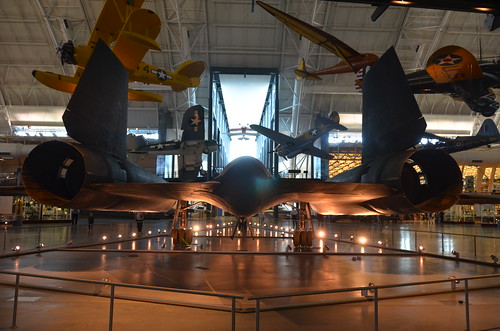
Image by Chris Devers
See more photos of this, and the Wikipedia article.
Details, quoting from Smithsonian National Air and Space Museum | Lockheed SR-71 Blackbird:
No reconnaissance aircraft in history has operated globally in more hostile airspace or with such complete impunity than the SR-71, the world’s fastest jet-propelled aircraft. The Blackbird’s performance and operational achievements placed it at the pinnacle of aviation technology developments during the Cold War.
This Blackbird accrued about 2,800 hours of flight time during 24 years of active service with the U.S. Air Force. On its last flight, March 6, 1990, Lt. Col. Ed Yielding and Lt. Col. Joseph Vida set a speed record by flying from Los Angeles to Washington, D.C., in 1 hour, 4 minutes, and 20 seconds, averaging 3,418 kilometers (2,124 miles) per hour. At the flight’s conclusion, they landed at Washington-Dulles International Airport and turned the airplane over to the Smithsonian.
Transferred from the United States Air Force.
Manufacturer:
Lockheed Aircraft Corporation
Designer:
Clarence L. "Kelly" Johnson
Date:
1964
Country of Origin:
United States of America
Dimensions:
Overall: 18ft 5 15/16in. x 55ft 7in. x 107ft 5in., 169998.5lb. (5.638m x 16.942m x 32.741m, 77110.8kg)
Other: 18ft 5 15/16in. x 107ft 5in. x 55ft 7in. (5.638m x 32.741m x 16.942m)
Materials:
Titanium
Physical Description:
Twin-engine, two-seat, supersonic strategic reconnaissance aircraft; airframe constructed largley of titanium and its alloys; vertical tail fins are constructed of a composite (laminated plastic-type material) to reduce radar cross-section; Pratt and Whitney J58 (JT11D-20B) turbojet engines feature large inlet shock cones.
Long Description:
No reconnaissance aircraft in history has operated in more hostile airspace or with such complete impunity than the SR-71 Blackbird. It is the fastest aircraft propelled by air-breathing engines. The Blackbird’s performance and operational achievements placed it at the pinnacle of aviation technology developments during the Cold War. The airplane was conceived when tensions with communist Eastern Europe reached levels approaching a full-blown crisis in the mid-1950s. U.S. military commanders desperately needed accurate assessments of Soviet worldwide military deployments, particularly near the Iron Curtain. Lockheed Aircraft Corporation’s subsonic U-2 (see NASM collection) reconnaissance aircraft was an able platform but the U. S. Air Force recognized that this relatively slow aircraft was already vulnerable to Soviet interceptors. They also understood that the rapid development of surface-to-air missile systems could put U-2 pilots at grave risk. The danger proved reality when a U-2 was shot down by a surface to air missile over the Soviet Union in 1960.
Lockheed’s first proposal for a new high speed, high altitude, reconnaissance aircraft, to be capable of avoiding interceptors and missiles, centered on a design propelled by liquid hydrogen. This proved to be impracticable because of considerable fuel consumption. Lockheed then reconfigured the design for conventional fuels. This was feasible and the Central Intelligence Agency (CIA), already flying the Lockheed U-2, issued a production contract for an aircraft designated the A-12. Lockheed’s clandestine ‘Skunk Works’ division (headed by the gifted design engineer Clarence L. "Kelly" Johnson) designed the A-12 to cruise at Mach 3.2 and fly well above 18,288 m (60,000 feet). To meet these challenging requirements, Lockheed engineers overcame many daunting technical challenges. Flying more than three times the speed of sound generates 316° C (600° F) temperatures on external aircraft surfaces, which are enough to melt conventional aluminum airframes. The design team chose to make the jet’s external skin of titanium alloy to which shielded the internal aluminum airframe. Two conventional, but very powerful, afterburning turbine engines propelled this remarkable aircraft. These power plants had to operate across a huge speed envelope in flight, from a takeoff speed of 334 kph (207 mph) to more than 3,540 kph (2,200 mph). To prevent supersonic shock waves from moving inside the engine intake causing flameouts, Johnson’s team had to design a complex air intake and bypass system for the engines.
Skunk Works engineers also optimized the A-12 cross-section design to exhibit a low radar profile. Lockheed hoped to achieve this by carefully shaping the airframe to reflect as little transmitted radar energy (radio waves) as possible, and by application of special paint designed to absorb, rather than reflect, those waves. This treatment became one of the first applications of stealth technology, but it never completely met the design goals.
Test pilot Lou Schalk flew the single-seat A-12 on April 24, 1962, after he became airborne accidentally during high-speed taxi trials. The airplane showed great promise but it needed considerable technical refinement before the CIA could fly the first operational sortie on May 31, 1967 – a surveillance flight over North Vietnam. A-12s, flown by CIA pilots, operated as part of the Air Force’s 1129th Special Activities Squadron under the "Oxcart" program. While Lockheed continued to refine the A-12, the U. S. Air Force ordered an interceptor version of the aircraft designated the YF-12A. The Skunk Works, however, proposed a "specific mission" version configured to conduct post-nuclear strike reconnaissance. This system evolved into the USAF’s familiar SR-71.
Lockheed built fifteen A-12s, including a special two-seat trainer version. Two A-12s were modified to carry a special reconnaissance drone, designated D-21. The modified A-12s were redesignated M-21s. These were designed to take off with the D-21 drone, powered by a Marquart ramjet engine mounted on a pylon between the rudders. The M-21 then hauled the drone aloft and launched it at speeds high enough to ignite the drone’s ramjet motor. Lockheed also built three YF-12As but this type never went into production. Two of the YF-12As crashed during testing. Only one survives and is on display at the USAF Museum in Dayton, Ohio. The aft section of one of the "written off" YF-12As which was later used along with an SR-71A static test airframe to manufacture the sole SR-71C trainer. One SR-71 was lent to NASA and designated YF-12C. Including the SR-71C and two SR-71B pilot trainers, Lockheed constructed thirty-two Blackbirds. The first SR-71 flew on December 22, 1964. Because of extreme operational costs, military strategists decided that the more capable USAF SR-71s should replace the CIA’s A-12s. These were retired in 1968 after only one year of operational missions, mostly over southeast Asia. The Air Force’s 1st Strategic Reconnaissance Squadron (part of the 9th Strategic Reconnaissance Wing) took over the missions, flying the SR-71 beginning in the spring of 1968.
After the Air Force began to operate the SR-71, it acquired the official name Blackbird– for the special black paint that covered the airplane. This paint was formulated to absorb radar signals, to radiate some of the tremendous airframe heat generated by air friction, and to camouflage the aircraft against the dark sky at high altitudes.
Experience gained from the A-12 program convinced the Air Force that flying the SR-71 safely required two crew members, a pilot and a Reconnaissance Systems Officer (RSO). The RSO operated with the wide array of monitoring and defensive systems installed on the airplane. This equipment included a sophisticated Electronic Counter Measures (ECM) system that could jam most acquisition and targeting radar. In addition to an array of advanced, high-resolution cameras, the aircraft could also carry equipment designed to record the strength, frequency, and wavelength of signals emitted by communications and sensor devices such as radar. The SR-71 was designed to fly deep into hostile territory, avoiding interception with its tremendous speed and high altitude. It could operate safely at a maximum speed of Mach 3.3 at an altitude more than sixteen miles, or 25,908 m (85,000 ft), above the earth. The crew had to wear pressure suits similar to those worn by astronauts. These suits were required to protect the crew in the event of sudden cabin pressure loss while at operating altitudes.
To climb and cruise at supersonic speeds, the Blackbird’s Pratt & Whitney J-58 engines were designed to operate continuously in afterburner. While this would appear to dictate high fuel flows, the Blackbird actually achieved its best "gas mileage," in terms of air nautical miles per pound of fuel burned, during the Mach 3+ cruise. A typical Blackbird reconnaissance flight might require several aerial refueling operations from an airborne tanker. Each time the SR-71 refueled, the crew had to descend to the tanker’s altitude, usually about 6,000 m to 9,000 m (20,000 to 30,000 ft), and slow the airplane to subsonic speeds. As velocity decreased, so did frictional heat. This cooling effect caused the aircraft’s skin panels to shrink considerably, and those covering the fuel tanks contracted so much that fuel leaked, forming a distinctive vapor trail as the tanker topped off the Blackbird. As soon as the tanks were filled, the jet’s crew disconnected from the tanker, relit the afterburners, and again climbed to high altitude.
Air Force pilots flew the SR-71 from Kadena AB, Japan, throughout its operational career but other bases hosted Blackbird operations, too. The 9th SRW occasionally deployed from Beale AFB, California, to other locations to carryout operational missions. Cuban missions were flown directly from Beale. The SR-71 did not begin to operate in Europe until 1974, and then only temporarily. In 1982, when the U.S. Air Force based two aircraft at Royal Air Force Base Mildenhall to fly monitoring mission in Eastern Europe.
When the SR-71 became operational, orbiting reconnaissance satellites had already replaced manned aircraft to gather intelligence from sites deep within Soviet territory. Satellites could not cover every geopolitical hotspot so the Blackbird remained a vital tool for global intelligence gathering. On many occasions, pilots and RSOs flying the SR-71 provided information that proved vital in formulating successful U. S. foreign policy. Blackbird crews provided important intelligence about the 1973 Yom Kippur War, the Israeli invasion of Lebanon and its aftermath, and pre- and post-strike imagery of the 1986 raid conducted by American air forces on Libya. In 1987, Kadena-based SR-71 crews flew a number of missions over the Persian Gulf, revealing Iranian Silkworm missile batteries that threatened commercial shipping and American escort vessels.
As the performance of space-based surveillance systems grew, along with the effectiveness of ground-based air defense networks, the Air Force started to lose enthusiasm for the expensive program and the 9th SRW ceased SR-71 operations in January 1990. Despite protests by military leaders, Congress revived the program in 1995. Continued wrangling over operating budgets, however, soon led to final termination. The National Aeronautics and Space Administration retained two SR-71As and the one SR-71B for high-speed research projects and flew these airplanes until 1999.
On March 6, 1990, the service career of one Lockheed SR-71A Blackbird ended with a record-setting flight. This special airplane bore Air Force serial number 64-17972. Lt. Col. Ed Yeilding and his RSO, Lieutenant Colonel Joseph Vida, flew this aircraft from Los Angeles to Washington D.C. in 1 hour, 4 minutes, and 20 seconds, averaging a speed of 3,418 kph (2,124 mph). At the conclusion of the flight, ’972 landed at Dulles International Airport and taxied into the custody of the Smithsonian’s National Air and Space Museum. At that time, Lt. Col. Vida had logged 1,392.7 hours of flight time in Blackbirds, more than that of any other crewman.
This particular SR-71 was also flown by Tom Alison, a former National Air and Space Museum’s Chief of Collections Management. Flying with Detachment 1 at Kadena Air Force Base, Okinawa, Alison logged more than a dozen ’972 operational sorties. The aircraft spent twenty-four years in active Air Force service and accrued a total of 2,801.1 hours of flight time.
Wingspan: 55’7"
Length: 107’5"
Height: 18’6"
Weight: 170,000 Lbs
Reference and Further Reading:
Crickmore, Paul F. Lockheed SR-71: The Secret Missions Exposed. Oxford: Osprey Publishing, 1996.
Francillon, Rene J. Lockheed Aircraft Since 1913. Annapolis, Md.: Naval Institute Press, 1987.
Johnson, Clarence L. Kelly: More Than My Share of It All. Washington D.C.: Smithsonian Institution Press, 1985.
Miller, Jay. Lockheed Martin’s Skunk Works. Leicester, U.K.: Midland Counties Publishing Ltd., 1995.
Lockheed SR-71 Blackbird curatorial file, Aeronautics Division, National Air and Space Museum.
DAD, 11-11-01
Tags:application, Great, image*







